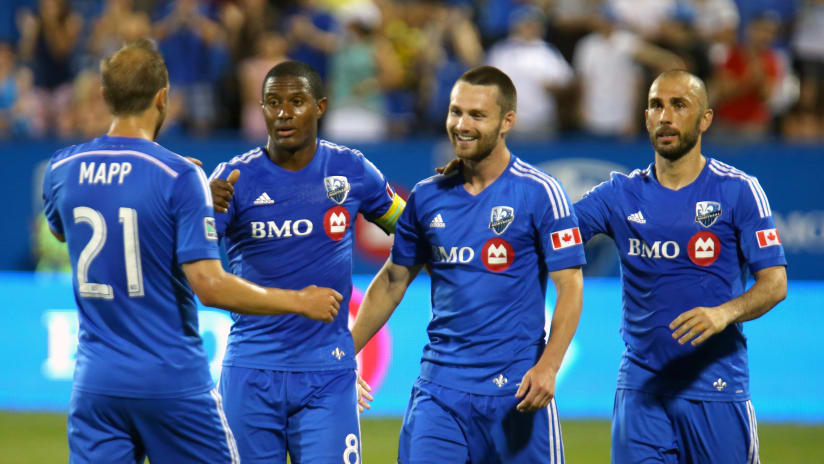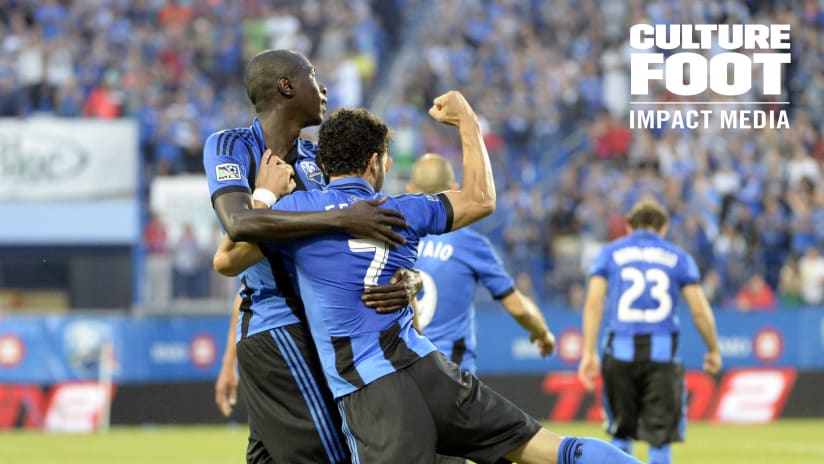Ladies and Gentlemen, it’s time for the FIFA World Cup.
The biggest tournament in the world has chosen Russia as its resting place for 2018. 32 countries, including the hosts themselves, will fight tooth and nail for a chance to lift the beautiful, 18-karat gold trophy that has been awarded to the World Cup winners since 1974 in its actual form.
But only one team can call this trophy its own every four years, and the level of competition is as stiff as could be, so much so that someone like Leroy Sané can be left out of a 23-man squad.
So, before we dive into each group, let us remember what these teams are fighting for. A career can be made or destroyed within this tournament’s metaphorical walls. To those who say that football is just a game, please refer to the image below.
Group A: Egypt, Russia, Saudi Arabia, Uruguay
The first group, which kicked things off with a game between Russia and Saudi Arabia, is a bit of a tricky one. Many have been quick to place the Uruguayans at the top of the table, and although the tiny South American country produces some world-class talent, the likes of Egypt and Russia won’t be the easiest of matchups.
With Mohamed Salah playing like he’s the best in the world, and with manager Héctor Cúper, who took over in 2015, Egypt has slowly established itself as the team to beat on the African continent, outperforming the likes of Ghana to qualify to the World Cup for the first time in 28 years.
And then there’s Russia, who must fight through the pressure of being the host nation. The Russians will want to at least get out of the group stage, and maybe even go on a run similar to that of the South Koreans, when they hosted the tournament in 2002, getting knocked off in the semifinals by the Germans.
Saudi Arabia, unfortunately, has slim chances of going through at best, and with reason. A bizarre year has forced the Green Falcons to try three managers in three months, finally settling upon Juan Antonio Pizzi, the former Argentine striker.
Group B: Iran, Morocco, Portugal, Spain
It’s easy to look at this group and write it off: Portugal and Spain have a lot more international experience, fame, and exposure than Iran and Morocco do. Portugal is coming off a Euro 2016 triumph, and Spain looks set to repeat its 2010 success in South Africa, considering the sheer quality and balance of its 23-man selection.
But to do so would be a huge mistake. Although Morocco and Iran may not have the star power the other two have, they managed to qualify through almost perfect runs. Morocco played six games in the final round of qualifying against African nations, edging out heavy favourites Ivory Coast, by conceding no goals in the process. Morocco has everything in its repertoire to make the perfect dark horse, but the fact they were placed in a very difficult group may sink them in the end.
Iran makes this group even harder to crack, as it was the first Asian country to qualify after an almost perfect qualifying campaign. Portuguese coach Carlos Queiroz is still at the team’s helm, the same who was there in 2014, when Iran almost tied Argentina in the group stage, if it wasn’t for a Messi stunner in stoppage time.
Watch out for striker Sardar Azmoun as well. The Iranian is already the national side’s fifth highest scorer in history – and he’s only 23 years old.
Group C: Australia, Denmark, France, Peru
It seems almost impossible that France doesn’t easily top this group. Les Bleus boast one of the best squads in the tournament, similar to the one that came just short in the Euro 2016 final. But with two more years of maturity under their belts, and with the addition of a certain Kylian Mbappé, they’ll be one of the most dangerous teams in this tournament.
The fight for second in this group should be quite a contest. The Socceroos, regular qualifiers for the World Cup in recent years, had a bit more of a struggle this time around, finishing third after Japan and Saudi Arabia, meaning Australia had to fight through two more rounds to qualify. Their stars, Tim Cahill and Mile Jedinak, are not exactly young anymore; at 38 and 33 respectively, this is most probably their last World Cup.
Peru, on the other, is on its way to its first World Cup appearance in 36 years, and it was no easy qualification; Peru painstakingly qualified for the playoff against New Zealand after drawing Columbia in the final game of qualifying. After a 0-0 draw in New Zealand, Peru sealed the deal back home to book its ticket to Russia. Peru’s coach, Ricardo Gareca, who won three Primera División titles in Argentina prior to taking over Peru’s national team, has assembled a young brigade of courageous and talented players.
Denmark will go as far as its star Christian Eriksen takes them. The Tottenham attacking midfielder was exceptional through qualifying, scoring 11 goals. Only Robert Lewandowski, Romelu Lukaku, and Cristiano Ronaldo surpassed the Dane.
Group D: Argentina, Croatia, Iceland, Nigeria
The group of death. At least, as far as we’re concerned, here at Impact Media. Four quality teams, albeit some with more quality than others, will go head-to-head for the two top spots. While many would say that it should be easy pickings for Argentina, we wouldn’t be so quick about it.
If qualifying means anything, it is clear that Argentina depends on Lionel Messi. The best player in the world scored a hat-trick on the last day of qualifying to propel his group into the tournament, but even Messi has never won a major trophy for Los Gauchos, although he came very close in 2014 and in 2015. There’s no doubt Argentina has the firepower up front, but do they have what it takes to quell some of the tournament’s better offenses?
The Croats will be part of those better offenses. If Croatia has always been a team to be reckoned with, this year should be no different. The golden generation of Croatian players are in their prime, and they could easily become the tournament’s dark horse. It all depends how the leaders Subasic, Pivaric, Rakitic, Modric, Kovacic, Perisic, and Mandzukic affect their team’s play.
And there’s Iceland, everyone’s favourite Cinderella story. Not to burst anyone’s bubble, but although its run to the quarter-final at Euro 2016 was magical, the World Cup is a different beast. Iceland may be the smallest country to every qualify for the tournament, and it has impressed over the years with wins against England, Turkey, and even Croatia. But there’s no Viking big enough that can get them deep into this tournament.
Nigeria and Argentina apparently go hand-in-hand, as this is the fifth time the two countries have been put into the same group at the World Cup. The quick Nigerians have built a reputation around being the most consistent African nation at the World Cup, and their kit is absolutely incredible.

Group E: Brazil, Costa Rica, Serbia, Switzerland
Easy pickings for Brazil; its true test will come in the knockout round. This may be the year for the Brazilians; a core in its prime, consisting of Neymar Jr., Coutinho, Willian, Roberto Firmino, Marcelo, Thiago Silva, Gabriel Jesus, to name a few. The Brazilians have talent everywhere, but is their depth enough to take them all the way?
The battle for second place, however, should be heated. Former Impact player Blerim Dzemaili will be in Switzerland’s 23-man squad. The Swiss won nine of 10 games in qualifying, but still lost out on direct qualification due to goal differential. Switzerland does boast a few impressive weapons however; Arsenal’s Granit Xhaka will be the team’s deep-lying playmaker and Stoke City’s Xherdan Shaqiri the goalscorer. Let’s hope he can recreate something like this.
Serbia and Costa Rica make up the bottom of the group’s barrel. Costa Rica’s run to the quarter-final in 2014 was fun, and shined a bright light on goalkeeper Keylor Navas, who went on to sign with Real Madrid. But a repeat seems unlikely for the Costa Ricans this year, unless they can pull off a positive result against the Serbs.
Serbia has its fair share of quality, but that has never translated into any success at the world stage. It hasn’t qualified for a Euro since 2000, and its World Cup appearances are highlighted by early exits, despite being considered the dark horse more often than not.
Group F: Germany, Korea Republic, Mexico, Sweden
No Zlatan this time for the Swedes.
The LA Galaxy player was very cryptic concerning whether or not he would play at the FIFA World Cup, but Sweden’s football federation put all hopes of seeing Zlatan in Russia to bed when it released its own press release telling us so. Unfortunate, since this is Sweden’s first World Cup in 12 years. But the team seems to function better without Zlatan on the field, as the prolific striker often becomes the target of any Swedish offense, making it easier to read for an opposition.
Mexico, on the other hand, has finished the last six World Cups in similar fashion: in the round of 16. This year may be no different; if they finish second behind Germany, chances are they’ll face a very serious Brazilian side in the round of 16. No amount of magic from Carlos Vela, Chicharito, or the Dos Santos brothers will be enough to propel them past that kind of quality.
South Korea is now taking part in its ninth straight tournament. And with Tottenham forward Heung-Min Son in the line-up, there’s no telling how far they can go in this group.
And then there’s the Germans, robotically annihilating everything in its path to at least a semi-final. The Germans breezed through qualifying with a 10-0 record, scoring 43 goals and conceding only four. Star ‘keeper Manuel Neuer is set to return from injury just in time, and in case of any hiccup, Barcelona’s Marc-Andre Ter Stegen is there to take the reigns.
And not only do the German’s boast a great chemistry, built over years of playing with the same core, the team is also absolutely stacked, in every definition of the word. We won’t prove this by going through the squad, but through the omissions: to name a few, Mario Götze, who scored the winning goal in 2014 against Argentina, and Leroy Sané, the Premier League’s young player of the year.
Group G: Belgium, England, Panama, Tunisia
Belgium’s pool of talent seems endless, but there’s just one problem: the window of opportunity is closing, and quickly. A generation of world-class footballers led by Eden Hazard, Kevin De Bruyne, and Romelu Lukaku are in their peaks right now, and will be desperate to do better than their quarter-final finish in 2014. And with Chelsea’s Thibault Courtois manning the net, Belgium is certainly going to be a force in Russia.
England has always represented the biggest conundrum on the international scene: always boasting a squad filled with talented players, England’s play usually falls short of expectations in major tournaments, and that’s proven by the fact that it’s failed to reach the quarter-finals in the last 12 major tournaments. But with forwards like Harry Kane, Marcus Rashford, and even Raheem Sterling, the future does look bright for England on the world stage, until they get in a penalty shootout...
Tunisia will unfortunately be without its best player and top scorer Youssed Msakni, sidelined with a knee injury. If its chances of going through to the elimination rounds were slim, his absence leaves the Eagles of Carthage wingless moving forward. Panama joins Iceland as the only two teams to have never participated in a World Cup, having qualified on the last day when it beat Costa Rica in the final moments of that game. Panama’s president, Juan Carlos Varela, announced that the day the country qualified would be a national holiday.
Group H: Colombia, Japan, Poland, Senegal
Finally, we come to the final group. Although Colombia and Poland will seem like the favourites at first glance, don’t count out the likes of Senegal and Japan just yet. In its own way, Group H is a little of a group of death as well, with all four teams having a viable chance of getting through. Needless to say, the competition will be stiff.
Four years after James Rodríguez’s coming out party at the 2014 World Cup, where he earned the tournament’s Golden Boot, the Colombians will be at it again, and their strengths go way beyond James Rodríguez. Radamel Falcao is a proven goalscorer and will be essential to Columbia’s success. In the back, Barcelona centre-back Yerri Mina will lead the defense, and tricky players like Juan Cuadrado will man the wings. All in all, a team that shouldn’t be taken lightly. Everyone remember that James goal in 2014?
Same goes for Poland, who breezed through qualifying with an 8-1-1 record, with Bayern Munich striker Robert Lewandowski scoring 10 goals in the process. They also impressed in their last major tournament, Euro 2016, where they finished level with Germany in group play, before beating Croatia in the round of 16, but eventually losing on penalty kicks to Portugal in the quarter-final.
Senegal will definitely tell you they have what it takes; the Lions of Teranga have a core of players that play their football in Europe’s top leagues, led by Liverpool forward Sadio Mané and centre-back Kalidou Koulibaly, who plays with Napoli. Japan, on its end, has been to every World Cup since its first one back in 1998. But after firing their head coach in March after a series of disappointing results, it’ll take a huge effort to get past this group.





